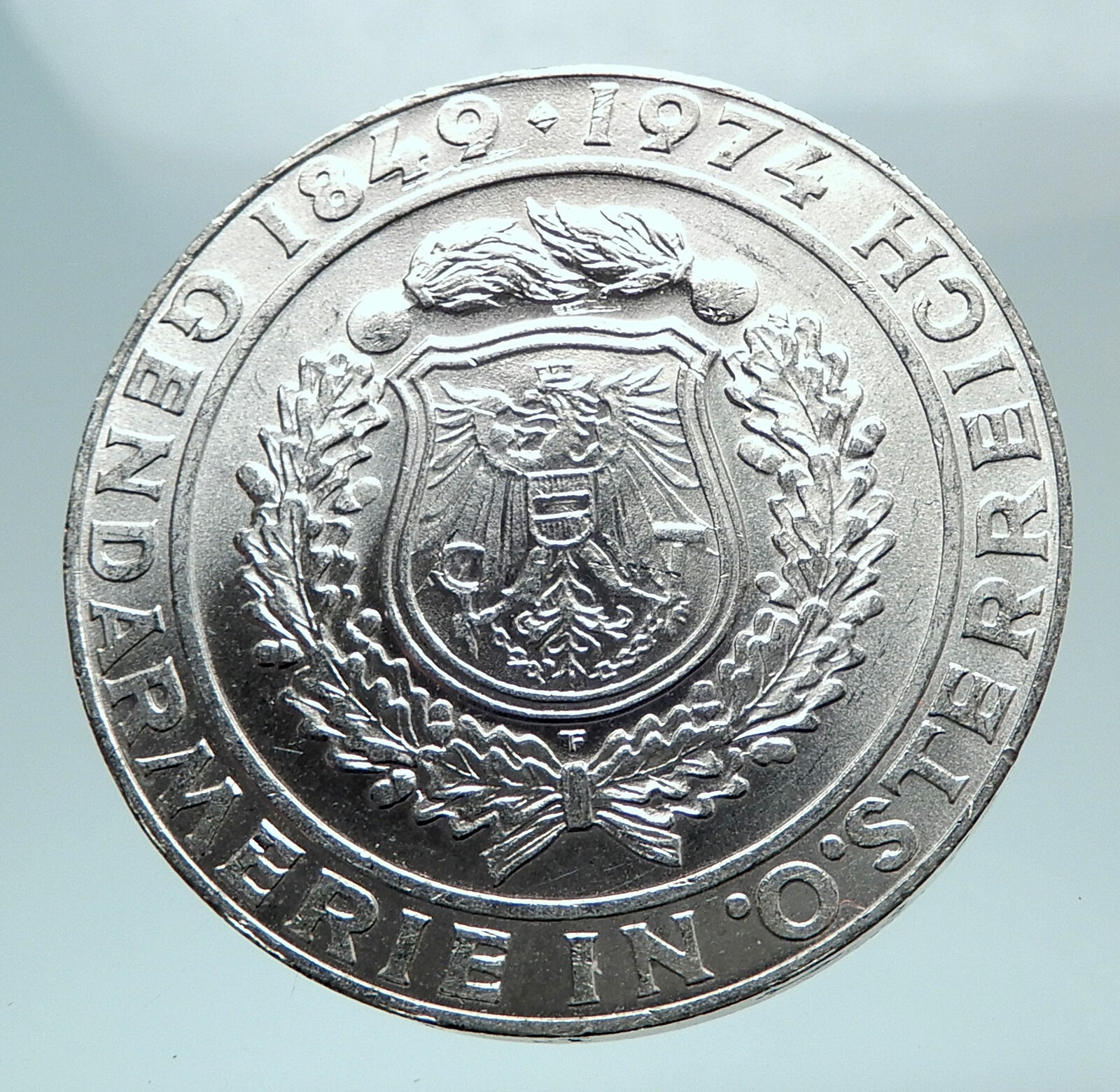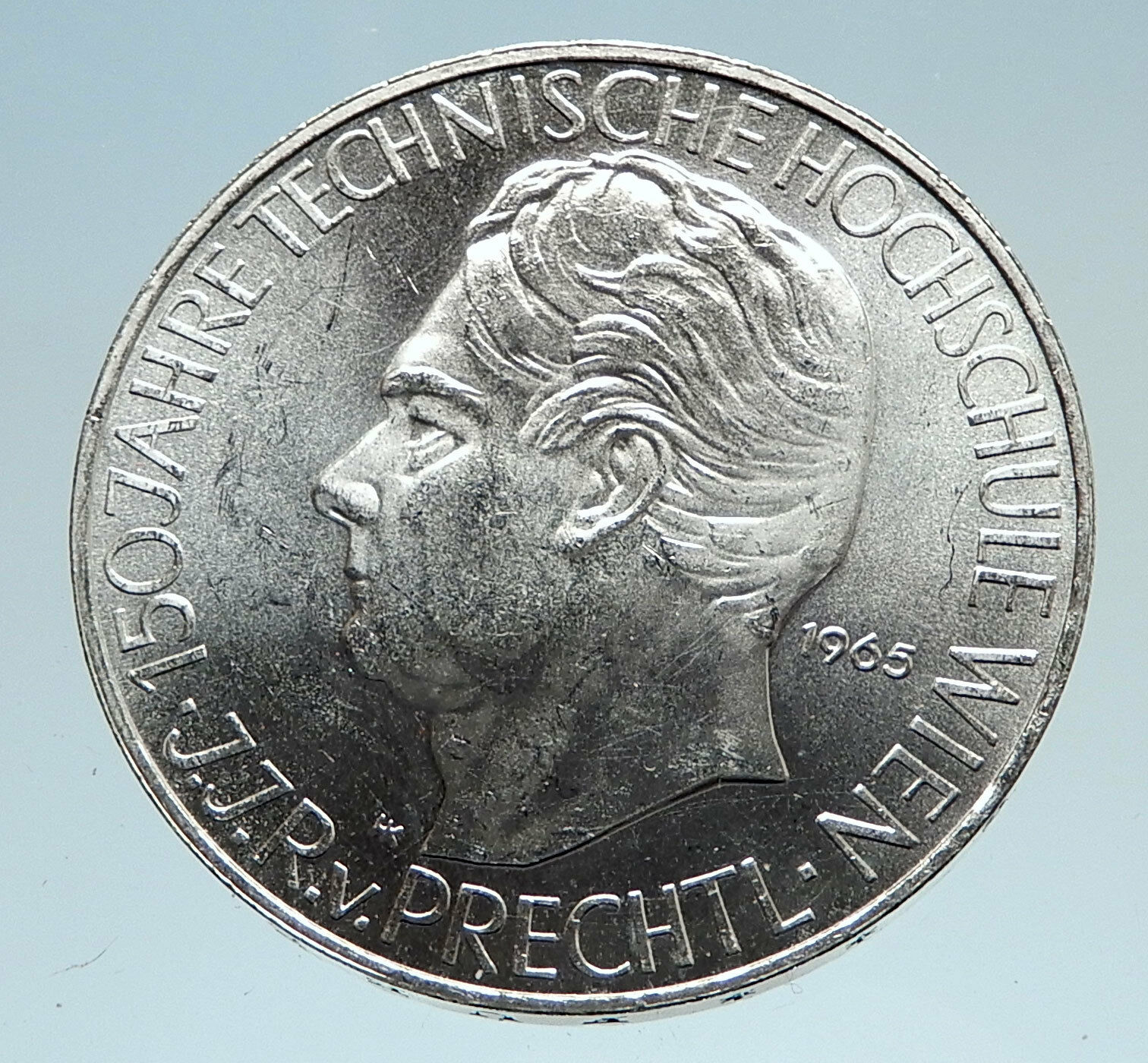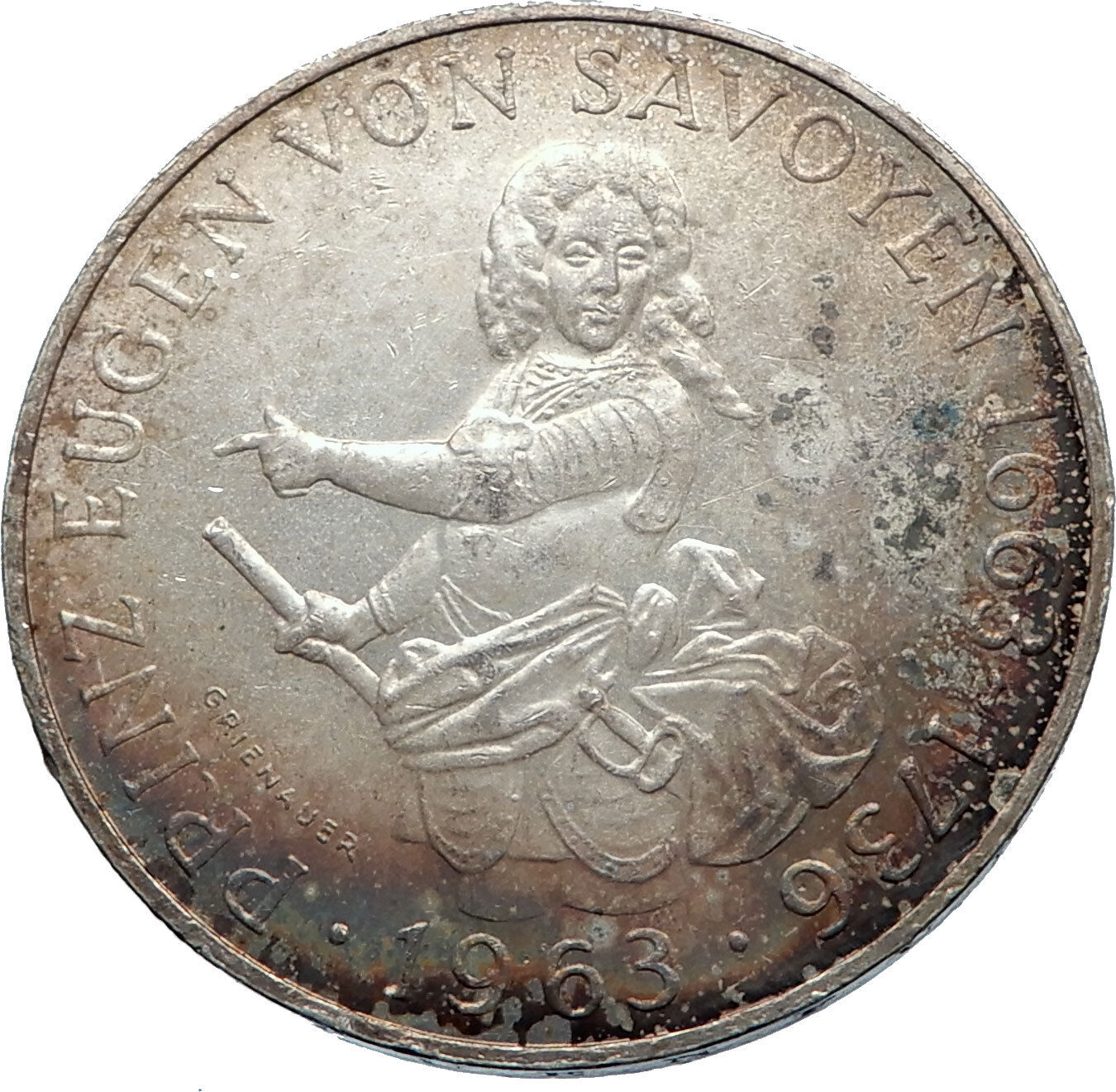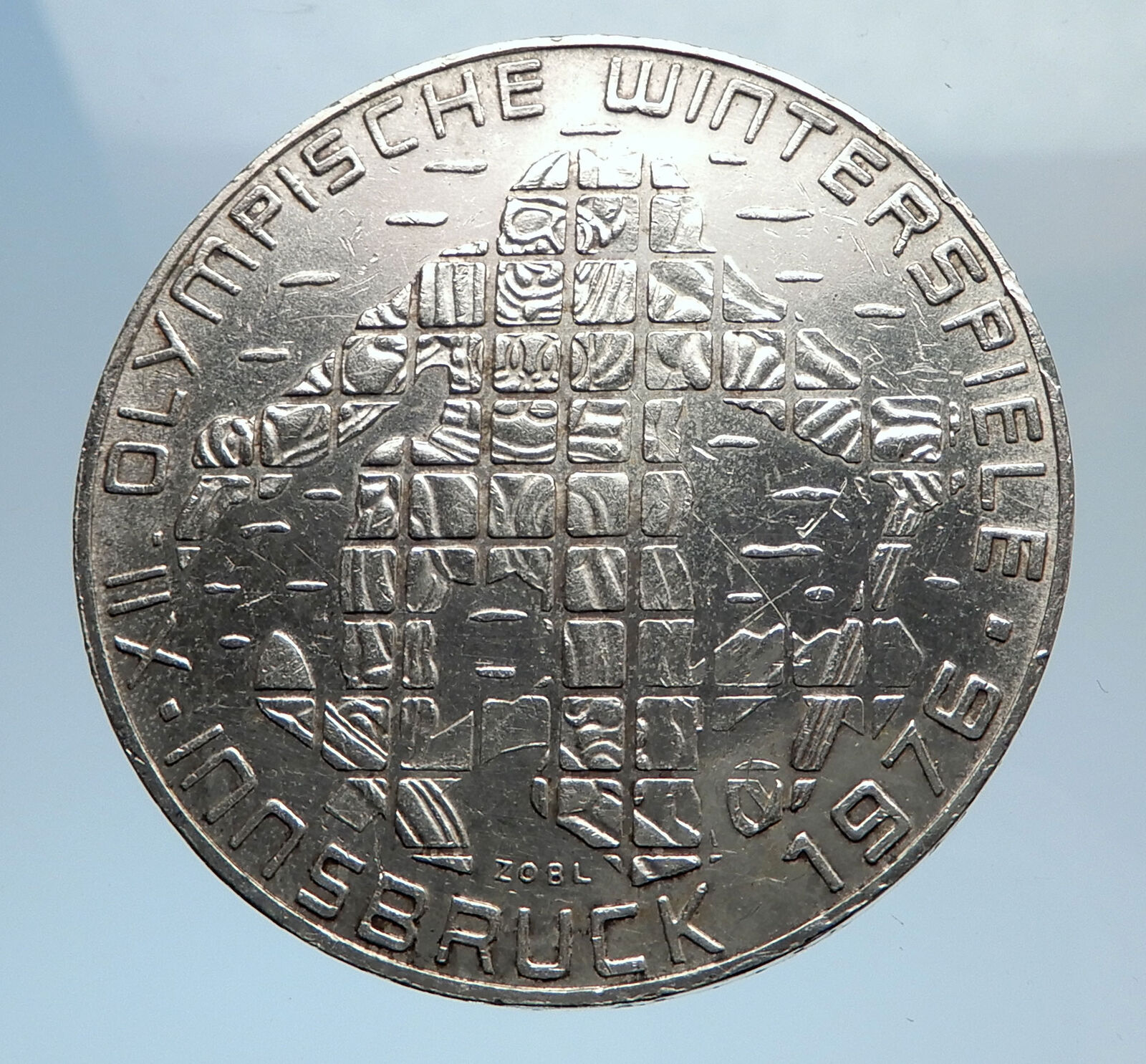|
Austria – 825 Years of the Mariazell Shrine – Commemorative issue
1982 Proof Silver 500 Schilling 38mm (24.00 grams) 0.640 Silver (0.4938 oz. ASW)
Reference: KM# 2958 Mintage: 118,800 (proof)
Value within circle of shields (on top Austria, and around the 9 federal states); Lettering: REPUBLIK
· ÖSTERREICH · 500 SCHILLING
Standing figure of enshrined Madonna of Mariazell holding child; Lettering: 825 JAHRE 1982 MARIAZELL
You are bidding on the exact item pictured, provided with a Certificate of Authenticity and Lifetime Guarantee of Authenticity.
 Mariazell Basilica, also known as Basilica Mariä Geburt (Basilica of the Birth of the Virgin Mary), is a Roman Catholic church building in Mariazell, Austria. It is the most important Christian pilgrimage destination in Austria and one of the most visited shrines in Europe. In the church, a miraculous wooden image of the Virgin Mary is venerated. Pope Pius X personally raised the sanctuary to the status of a minor basilica by a Motu proprio on 10 November 1907. Later, he ensured the coronation of the Marian image by a decree on 8 September 1908. Mariazell is the only church named as a national shrine of all German-speaking countries. The territory around Mariazell was given to St. Lambert’s Abbey around 1103, and the monks built a cell in order to serve the local residents. Tradition gives the town’s founding day as December 21, 1157, but it is first documented in 1243. A Marian altar was dedicated in 1266. Mariazell Basilica, also known as Basilica Mariä Geburt (Basilica of the Birth of the Virgin Mary), is a Roman Catholic church building in Mariazell, Austria. It is the most important Christian pilgrimage destination in Austria and one of the most visited shrines in Europe. In the church, a miraculous wooden image of the Virgin Mary is venerated. Pope Pius X personally raised the sanctuary to the status of a minor basilica by a Motu proprio on 10 November 1907. Later, he ensured the coronation of the Marian image by a decree on 8 September 1908. Mariazell is the only church named as a national shrine of all German-speaking countries. The territory around Mariazell was given to St. Lambert’s Abbey around 1103, and the monks built a cell in order to serve the local residents. Tradition gives the town’s founding day as December 21, 1157, but it is first documented in 1243. A Marian altar was dedicated in 1266.
The Basilica of the Mariä Geburt
In the fourteenth century, a gothic church stood at Mariazell with a 90 m high spire and an ogive portal. In 1420 and 1474, the church was destroyed by fire. The church building was later expanded and redesigned in the Baroque style by Domenico Sciassia from 1644 to 1683. To the left and right of the gothic spire, a baroque tower was built, the nave was lengthened and widened, and a dome was added on the eastern side. The high altar, consecrated in 1704, was designed by Johann Bernhard Fischer von Erlach.
The twelve side chapels each contain a baroque altar. The plaster stucco work of the organ gallery and the 1737 organ console was created by the Viennese sculptor Johann Wagner in 1740. In front of the main entrance are two life-sized lead statues created by Balthasar Moll in 1757. To the left stands King Ludwig I of Hungary and to the right is Heinrich, Margrave of Moravia. In 1907, the pilgrimage church was elevated to a basilica minor. The basilica has been undergoing a general restoration since 1992, which was completed in 2007.
Holy image and chapel
 The older part of the building, built in 1690, contains the Gnadenkapelle. This chapel sits on the site of the first “cell” and holds a Late Romanesque miraculous image of the Virgin Mary – the “Magna Mater Austria”, a 48 cm tall statuette made of linden. The miraculous image receives an elaborately designed merciful dress every year. The more than 150 dresses can either be viewed in the treasury or are carefully conserved. Many clothes were donated as votive offerings or by wealthy people. The design of a mercy dress is still considered a great honor today. The older part of the building, built in 1690, contains the Gnadenkapelle. This chapel sits on the site of the first “cell” and holds a Late Romanesque miraculous image of the Virgin Mary – the “Magna Mater Austria”, a 48 cm tall statuette made of linden. The miraculous image receives an elaborately designed merciful dress every year. The more than 150 dresses can either be viewed in the treasury or are carefully conserved. Many clothes were donated as votive offerings or by wealthy people. The design of a mercy dress is still considered a great honor today.
Pilgrimage development
Pilgrims were already making their way to the Marian sanctuary in the 12th century. Larger numbers of pilgrims are documented beginning around 1330, when a secular court imposed a Zellfahrt (Zell journey) as atonement for its criminals. In the following years increasing numbers of pilgrims came from neighboring lands. After the Counter-Reformation, the Habsburgs made Mariazell a national sanctuary. However, in 1783, Emperor Joseph II abandoned the monastery in Mariazell, and in 1787, he completely banned pilgrimages to Mariazell. After the early withdrawal of the restrictions, around a million pilgrims visit Mariazell each year. In May 2004, the Mitteleuropäischer Katholikentag (Central European Catholic Day) took place in Mariazell.
Legends
There are three basic legends about the founding of Mariazell and its development. The legend of the town’s founding says that in 1157, a monk of St. Lambrecht, called Magnus, was sent to the area of the current town as a minister. When his way was blocked by a rock, he set down the Marian figurine he had brought with him, whereby the rock broke apart and left Magnus’ way clear. On a nearby bank, he settled down, placed the figurine on a tree trunk, and built a cell out of wood, which served as both his chapel and his living quarters.
The second legend relates how Henry Margrave of Moravia and his wife, having been healed of severe gout by the help of Our Lady of Mariazell, made a pilgrimage to that place around 1200. There they had the first stone church built on the site of the wooden chapel.
The third legend recounts a victorious battle of the Hungarian King Ludwig I. over a numerically superior Turkish army. In thanks he built the gothic church and endowed it with the Schatzkammerbild (treasury image) that he saw laid upon his chest in a dream.
In 2007, the Mariazell Basilica was selected as the main motif of a collectors’ coin: the Austrian Mariazell Basilica commemorative coin, minted on May 9. The coin shows the facade of the basilica with its characteristic central gothic tower flanked by two baroque towers.
  Austria, officially the Republic of Austria (German: Republik Österreich), is a federal republic and a landlocked country of over 8.5 million people in Central Europe. It is bordered by the Czech Republic and Germany to the north, Hungary and Slovakia to the east, Slovenia and Italy to the south, and Switzerland and Liechtenstein to the west. The territory of Austria covers 83,879 square kilometres (32,386 sq mi). Austria’s terrain is highly mountainous, lying within the Alps; only 32% of the country is below 500 metres (1,640 ft), and its highest point is 3,798 metres (12,461 ft). The majority of the population speak local Bavarian dialects of German as their native language, and Austrian German in its standard form is the country’s official language. Other local official languages are Hungarian, Burgenland Croatian, and Slovene. Austria, officially the Republic of Austria (German: Republik Österreich), is a federal republic and a landlocked country of over 8.5 million people in Central Europe. It is bordered by the Czech Republic and Germany to the north, Hungary and Slovakia to the east, Slovenia and Italy to the south, and Switzerland and Liechtenstein to the west. The territory of Austria covers 83,879 square kilometres (32,386 sq mi). Austria’s terrain is highly mountainous, lying within the Alps; only 32% of the country is below 500 metres (1,640 ft), and its highest point is 3,798 metres (12,461 ft). The majority of the population speak local Bavarian dialects of German as their native language, and Austrian German in its standard form is the country’s official language. Other local official languages are Hungarian, Burgenland Croatian, and Slovene.
 The origins of modern-day Austria date back to the time of the Habsburg dynasty when the vast majority of the country was a part of the Holy Roman Empire. From the time of the Reformation, many Northern German princes, resenting the authority of the Emperor, used Protestantism as a flag of rebellion. The Thirty Years War, the influence of the Kingdom of Sweden and Kingdom of France, the rise of the Kingdom of Prussia, and the Napoleonic invasions all weakened the power of the Emperor in the North of Germany, but in the South, and in non-German areas of the Empire, the Emperor and Catholicism maintained control. During the 17th and 18th centuries, Austria was able to retain its position as one of the great powers of Europe and, in response to the coronation of Napoleon as the Emperor of the French, the Austrian Empire was officially proclaimed in 1804. Following Napoleon’s defeat, Prussia emerged as Austria’s chief competitor for rule of a larger Germany. Austria’s defeat by Prussia at the Battle of Königgrätz, during the Austro-Prussian War of 1866 cleared the way for Prussia to assert control over the rest of Germany. In 1867, the empire was reformed into Austria-Hungary. After the defeat of France in the 1870 Franco-Prussian War, Austria was left out of the formation of a new German Empire, although in the following decades its politics, and its foreign policy, increasingly converged with those of the Prussian-led Empire. During the 1914 July Crisis that followed the assassination of Archduke Franz Ferdinand of Austria, Germany guided Austria in issuing the ultimatum to Serbia that led to the declaration of World War I. The origins of modern-day Austria date back to the time of the Habsburg dynasty when the vast majority of the country was a part of the Holy Roman Empire. From the time of the Reformation, many Northern German princes, resenting the authority of the Emperor, used Protestantism as a flag of rebellion. The Thirty Years War, the influence of the Kingdom of Sweden and Kingdom of France, the rise of the Kingdom of Prussia, and the Napoleonic invasions all weakened the power of the Emperor in the North of Germany, but in the South, and in non-German areas of the Empire, the Emperor and Catholicism maintained control. During the 17th and 18th centuries, Austria was able to retain its position as one of the great powers of Europe and, in response to the coronation of Napoleon as the Emperor of the French, the Austrian Empire was officially proclaimed in 1804. Following Napoleon’s defeat, Prussia emerged as Austria’s chief competitor for rule of a larger Germany. Austria’s defeat by Prussia at the Battle of Königgrätz, during the Austro-Prussian War of 1866 cleared the way for Prussia to assert control over the rest of Germany. In 1867, the empire was reformed into Austria-Hungary. After the defeat of France in the 1870 Franco-Prussian War, Austria was left out of the formation of a new German Empire, although in the following decades its politics, and its foreign policy, increasingly converged with those of the Prussian-led Empire. During the 1914 July Crisis that followed the assassination of Archduke Franz Ferdinand of Austria, Germany guided Austria in issuing the ultimatum to Serbia that led to the declaration of World War I.
After the collapse of the Habsburg (Austro-Hungarian) Empire in 1918 at the end of World War I, Austria adopted and used the name the Republic of German-Austria (Deutschösterreich, later Österreich) in an attempt for union with Germany, but was forbidden due to the Treaty of Saint-Germain-en-Laye (1919). The First Austrian Republic was established in 1919. In the 1938 Anschluss, Austria was occupied and annexed by Nazi Germany. This lasted until the end of World War II in 1945, after which Germany was occupied by the Allies and Austria’s former democratic constitution was restored. In 1955, the Austrian State Treaty re-established Austria as a sovereign state, ending the occupation. In the same year, the Austrian Parliament created the Declaration of Neutrality which declared that the Second Austrian Republic would become permanently neutral.
Today, Austria is a parliamentary representative democracy comprising nine federal states. The capital and largest city, with a population exceeding 1.7 million, is Vienna. Austria is one of the richest countries in the world, with a nominal per capita GDP of $52,216 (2014 est.). The country has developed a high standard of living and in 2014 was ranked 21st in the world for its Human Development Index. Austria has been a member of the United Nations since 1955, joined the European Union in 1995, and is a founder of the OECD. Austria also signed the Schengen Agreement in 1995, and adopted the euro in 1999.
|




 Mariazell Basilica, also known as Basilica Mariä Geburt (Basilica of the Birth of the Virgin Mary), is a Roman Catholic church building in Mariazell, Austria. It is the most important Christian pilgrimage destination in Austria and one of the most visited shrines in Europe. In the church, a miraculous wooden image of the Virgin Mary is venerated. Pope Pius X personally raised the sanctuary to the status of a minor basilica by a Motu proprio on 10 November 1907. Later, he ensured the coronation of the Marian image by a decree on 8 September 1908. Mariazell is the only church named as a national shrine of all German-speaking countries. The territory around Mariazell was given to St. Lambert’s Abbey around 1103, and the monks built a cell in order to serve the local residents. Tradition gives the town’s founding day as December 21, 1157, but it is first documented in 1243. A Marian altar was dedicated in 1266.
Mariazell Basilica, also known as Basilica Mariä Geburt (Basilica of the Birth of the Virgin Mary), is a Roman Catholic church building in Mariazell, Austria. It is the most important Christian pilgrimage destination in Austria and one of the most visited shrines in Europe. In the church, a miraculous wooden image of the Virgin Mary is venerated. Pope Pius X personally raised the sanctuary to the status of a minor basilica by a Motu proprio on 10 November 1907. Later, he ensured the coronation of the Marian image by a decree on 8 September 1908. Mariazell is the only church named as a national shrine of all German-speaking countries. The territory around Mariazell was given to St. Lambert’s Abbey around 1103, and the monks built a cell in order to serve the local residents. Tradition gives the town’s founding day as December 21, 1157, but it is first documented in 1243. A Marian altar was dedicated in 1266.  The older part of the building, built in 1690, contains the Gnadenkapelle. This chapel sits on the site of the first “cell” and holds a Late Romanesque miraculous image of the Virgin Mary – the “Magna Mater Austria”, a 48 cm tall statuette made of linden. The miraculous image receives an elaborately designed merciful dress every year. The more than 150 dresses can either be viewed in the treasury or are carefully conserved. Many clothes were donated as votive offerings or by wealthy people. The design of a mercy dress is still considered a great honor today.
The older part of the building, built in 1690, contains the Gnadenkapelle. This chapel sits on the site of the first “cell” and holds a Late Romanesque miraculous image of the Virgin Mary – the “Magna Mater Austria”, a 48 cm tall statuette made of linden. The miraculous image receives an elaborately designed merciful dress every year. The more than 150 dresses can either be viewed in the treasury or are carefully conserved. Many clothes were donated as votive offerings or by wealthy people. The design of a mercy dress is still considered a great honor today. 
 Austria, officially the Republic of Austria (German: Republik Österreich), is a federal republic and a landlocked country of over 8.5 million people in Central Europe. It is bordered by the Czech Republic and Germany to the north, Hungary and Slovakia to the east, Slovenia and Italy to the south, and Switzerland and Liechtenstein to the west. The territory of Austria covers 83,879 square kilometres (32,386 sq mi). Austria’s terrain is highly mountainous, lying within the Alps; only 32% of the country is below 500 metres (1,640 ft), and its highest point is 3,798 metres (12,461 ft). The majority of the population speak local Bavarian dialects of German as their native language, and Austrian German in its standard form is the country’s official language. Other local official languages are Hungarian, Burgenland Croatian, and Slovene.
Austria, officially the Republic of Austria (German: Republik Österreich), is a federal republic and a landlocked country of over 8.5 million people in Central Europe. It is bordered by the Czech Republic and Germany to the north, Hungary and Slovakia to the east, Slovenia and Italy to the south, and Switzerland and Liechtenstein to the west. The territory of Austria covers 83,879 square kilometres (32,386 sq mi). Austria’s terrain is highly mountainous, lying within the Alps; only 32% of the country is below 500 metres (1,640 ft), and its highest point is 3,798 metres (12,461 ft). The majority of the population speak local Bavarian dialects of German as their native language, and Austrian German in its standard form is the country’s official language. Other local official languages are Hungarian, Burgenland Croatian, and Slovene. The origins of modern-day Austria date back to the time of the Habsburg dynasty when the vast majority of the country was a part of the Holy Roman Empire. From the time of the Reformation, many Northern German princes, resenting the authority of the Emperor, used Protestantism as a flag of rebellion. The Thirty Years War, the influence of the Kingdom of Sweden and Kingdom of France, the rise of the Kingdom of Prussia, and the Napoleonic invasions all weakened the power of the Emperor in the North of Germany, but in the South, and in non-German areas of the Empire, the Emperor and Catholicism maintained control. During the 17th and 18th centuries, Austria was able to retain its position as one of the great powers of Europe and, in response to the coronation of Napoleon as the Emperor of the French, the Austrian Empire was officially proclaimed in 1804. Following Napoleon’s defeat, Prussia emerged as Austria’s chief competitor for rule of a larger Germany. Austria’s defeat by Prussia at the Battle of Königgrätz, during the Austro-Prussian War of 1866 cleared the way for Prussia to assert control over the rest of Germany. In 1867, the empire was reformed into Austria-Hungary. After the defeat of France in the 1870 Franco-Prussian War, Austria was left out of the formation of a new German Empire, although in the following decades its politics, and its foreign policy, increasingly converged with those of the Prussian-led Empire. During the 1914 July Crisis that followed the assassination of Archduke Franz Ferdinand of Austria, Germany guided Austria in issuing the ultimatum to Serbia that led to the declaration of World War I.
The origins of modern-day Austria date back to the time of the Habsburg dynasty when the vast majority of the country was a part of the Holy Roman Empire. From the time of the Reformation, many Northern German princes, resenting the authority of the Emperor, used Protestantism as a flag of rebellion. The Thirty Years War, the influence of the Kingdom of Sweden and Kingdom of France, the rise of the Kingdom of Prussia, and the Napoleonic invasions all weakened the power of the Emperor in the North of Germany, but in the South, and in non-German areas of the Empire, the Emperor and Catholicism maintained control. During the 17th and 18th centuries, Austria was able to retain its position as one of the great powers of Europe and, in response to the coronation of Napoleon as the Emperor of the French, the Austrian Empire was officially proclaimed in 1804. Following Napoleon’s defeat, Prussia emerged as Austria’s chief competitor for rule of a larger Germany. Austria’s defeat by Prussia at the Battle of Königgrätz, during the Austro-Prussian War of 1866 cleared the way for Prussia to assert control over the rest of Germany. In 1867, the empire was reformed into Austria-Hungary. After the defeat of France in the 1870 Franco-Prussian War, Austria was left out of the formation of a new German Empire, although in the following decades its politics, and its foreign policy, increasingly converged with those of the Prussian-led Empire. During the 1914 July Crisis that followed the assassination of Archduke Franz Ferdinand of Austria, Germany guided Austria in issuing the ultimatum to Serbia that led to the declaration of World War I.




